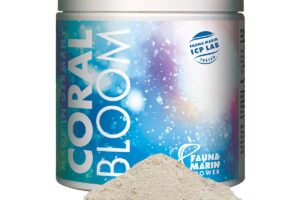Compute salinity from sea water macro elements
For the curious, I will briefly present a method for computing, with a good approximation, the salinity of sea water (natural or reconstituted) from the macros elements quantities of water that can be obtained with a water analysis from our aquariums like ICP-OES (Triton lab, ATI …). A calculator is proposed in the article for the implementation for all.
The main elements of sea water
Seawater is made up of many elements, but only about ten of them have a significant impact on salinity for the precision we are interested in. The other elements have a very low relative mass and therefore a negligible impact on the value of the salinity. These items are listed in the table below.

It is important to remember that the relative percentages of these constituents are constant in natural seawater, whatever the seas, salinity and temperature.
But for our aquariums, these quantities and proportions are more or less approximated according to the salt manufacturers and the additions used. The same is true for the other elements not mentioned here and which are equally important for the life of our aquariums. This has a not insignificant impact on salinity. Moreover, since these proportions are likely to change in synthetic water, the result will be slightly different according to the measure method used (refractometer, aerometer, conductivity meter, chlorinity), which promotes more or less a part of the components more precisely by this measure.
How to link analyzes and salinity?
The ICP-OES analyzes provide results for the basic chemical elements (Na, Mg, Ca, S, K, P …) with sometimes some complementary results (dKH, PO4, Salinity …) according to the laboratories. They do not give the values for the ‘complex’ molecules of the constituents that matter to us (table above).
When salinity is not supplied (or even supplied, for the most curious ones), from the only macros elements measured (the others having a negligible mass), we can reconstitute the chemical elements of the preceding table.
Let us use, for example, the measurement of sulfur (S); the amount and mass of sulfate molecules (So42-) can be reconstituted. We take all the macros elements measured one by one and, on seeing their origin, we take the « inverse path » to calculate the mass of the constituents of origin to which they belong.
The measurement for Cl is not always provided. In the case of Triton Lab, it is the only missing macro-molecule that has a major impact on salinity, but considering that water is ionically balanced, it is possible to distinguish between anions and cations to estimate this missing quantity.
We can also add a few other elements from alkalinity, gases (though almost negligible), constants … Once we have the mass per liter of each of the important elements chosen, we add up the whole.
But since the unit of measurement is in g/l, we still have to convert to g/kg to obtain salinity (here we are talking about Practical Salinity) using the density of water.
For this link between density and Practical Salinity we use the TEOS-10 conversion method. This method, already presented via a calculator, is the most accurate to date while being complex, but the APIs (Application Programming Interface) for computational software developers are provided for the main conversions. Unfortunately, there is still one last difficulty: we do not know the density linked to salinity since we are looking for it. We can say that we are in the case of a circular reference! We will therefore use an iterative algorithm to obtain the final result.
The calculator
For those who want to simply recalculate the salinity of the water from their analysis, you can use the proposed calculator.
Enter the macros elements from your analysis to get an estimate of your salinity.
If you have a Triton Lab analysis, you can download it from the Triton Lab site in the .csv file format and upload it directly into the calculator. This will save you from having to manually copy the macro values.
The calculator gives back:
- The calculated salinity,
- The quantities of each of the elements taken into account for the salinity of the tank,
- The quantities of each element taken into account if the salinity was at S = Sp = 35 (normalization) for a simpler comparison with standard seawater, various references and salts …
For assumptions, do not touch anything unless you know why :). The temperature used is that of the ICP-OES measurement and not that of the tank.
It should be noted that some reefers may be surprised sometimes to find a lower salinity, for example ≈ a point less than they thought. This is valid both for the value provided by this calculator and for the salinities directly supplied on the analyzes which proposes it.
Although this is not necessarily the cause, consider calibrating your measuring devices to values close to seawater and compensating for temperature with the tables when they are provided (unfortunately this second point is rather rare and not easy to use).
To convert this result to density, specific density (SG) … depending on the temperature of your water in the tank, you can use the Sp ↔ ρ calculator presented in a previous article.




